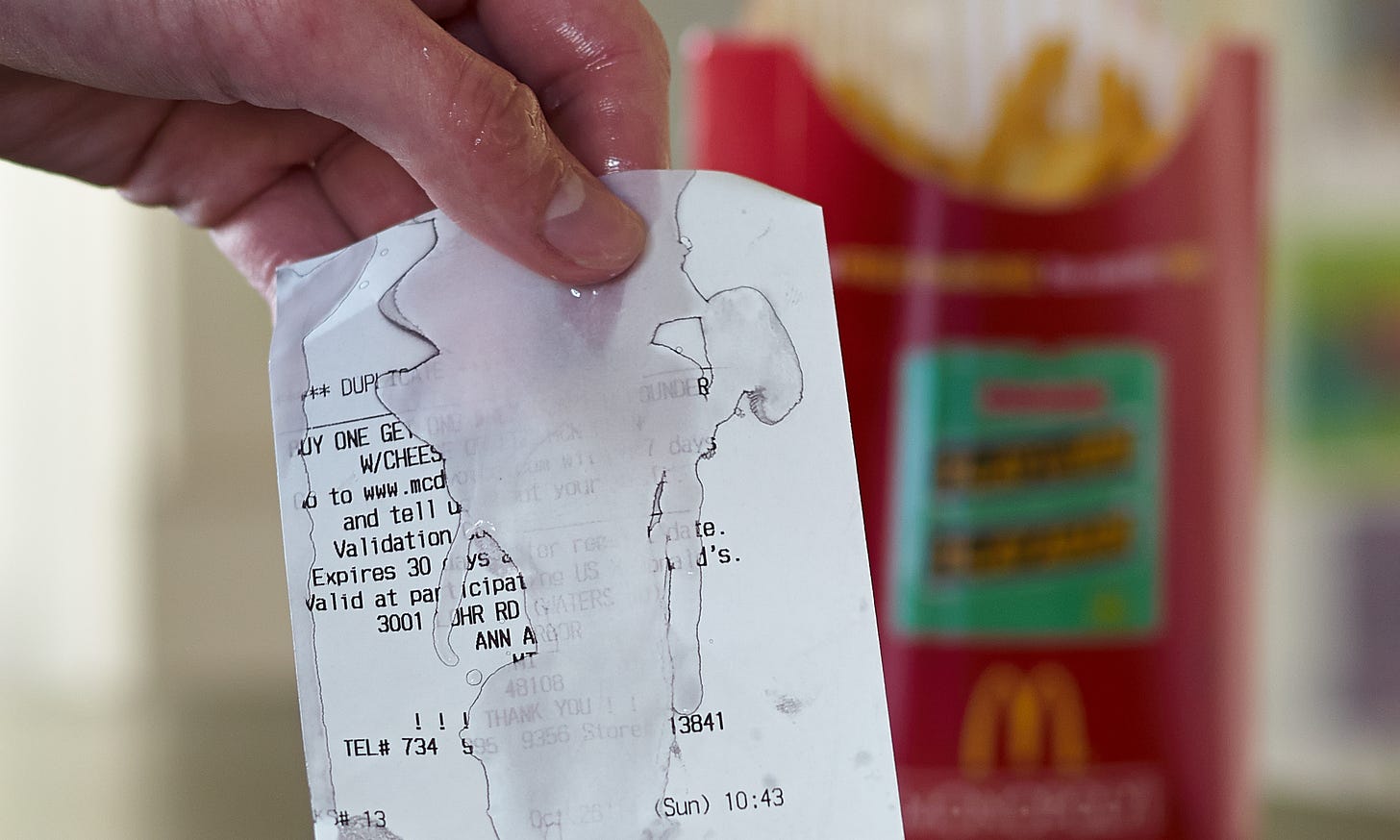Does your shampoo contain hormone disruptors?
What chemicals are you exposed to on a daily basis?
Let’s talk about hormone disruptors.
There are certain chemicals we come across in the environment that has an effect on our hormones. A decade back, we were not as exposed to environmental toxins as we are now. But now we are exposed to them more than ever.
I put up a story on my Instagram a few weeks ago talking about BPA (highly active hormone disruptor and a cause for PCOS) exposure through shopping receipts.
So every time you have sanitizer on your hands (or even sweat/ water), the chemicals from the receipt make its way into your skin.
Here is an exaggerated picture to help you understand the point:
But what are the other common hormone disruptors we might be exposing ourselves to?
Here is an overwhelming list for you.
Let’s make this easy to understand. Start by picking up a skin or hair care product you use almost daily. Look at the ingredients and see if it has any of the below. Take just one product per day and in a month, you would have replaced all the hormone disruptors from your home/ office.
1. BHA and BHT
Used mainly in moisturizers and makeup as preservatives. Suspected endocrine disruptors and may cause cancer (BHA). Harmful to fish and other wildlife.
2. Coal tar dyes
P-phenylenediamine and colours listed as “CI” followed by five digits P-phenylenediamine is used in some hair dyes; other colours are used in a variety of cosmetics. Potential to cause cancer and may be contaminated with heavy metals toxic to the brain.
3. DEA, cocamide DEA and lauramide DEA
Used in some creamy and foaming products, such as moisturizers and shampoos. It can react to form nitrosamines, which may cause cancer. Harmful to fish and other wildlife.
4. Dibutyl phthalate
Used as a plasticizer in some nail care products. Suspected endocrine disruptor and reproductive toxicant. Harmful to fish and other wildlife.
5. Formaldehyde-releasing preservatives
DMDM hydantoin, diazolidinyl urea, imidazolidinyl urea, methenamine, quarternium-15, and sodium hydroxymethylglycinate. Used in a variety of cosmetics. Slowly release small amounts of formaldehyde, which causes cancer.
6. Paraben, methylparaben, butylparaben and propylparaben
Used in a variety of cosmetics as preservatives. Suspected endocrine disruptors and may interfere with male reproductive functions.
7. Perfume
Any mixture of fragrance ingredients used in a variety of cosmetics. Some fragrance ingredients can trigger allergies and asthma. Some linked to cancer and neurotoxicity. Some harmful to fish and other wildlife.
8. PEGs (e.g., PEG -60)
Used in some cosmetic cream bases. It can be contaminated with 1,4-dioxane, which may cause cancer.
9. Petrolatum
Used in some hair products for shine and as a moisture barrier in some lip balms, lipsticks, and moisturizers. A petroleum product that can be contaminated with polycyclic aromatic hydrocarbons, which may cause cancer.
10. Siloxanes: Examples; cyclopentasiloxane, cyclohexasiloxane and cyclomethicone
Used in a variety of cosmetics to soften, smooth, and moisten. Suspected endocrine disruptor and reproductive toxicant (cyclotetrasiloxane). Harmful to fish and other wildlife.
11. SodiumLaureth Sulphate
Used in some foaming cosmetics, such as shampoos, cleansers, and bubble baths. It can be contaminated with 1,4-dioxane, which may cause cancer.
12. Triclosan
Used in some antibacterial cosmetics, such as toothpaste, cleansers, and antiperspirants. Suspected endocrine disruptor and may contribute to antibiotic resistance in bacteria. Harmful to fish and other wildlife.
It is TMI I know, but hope this helps!
Roshni Sanghvi.




